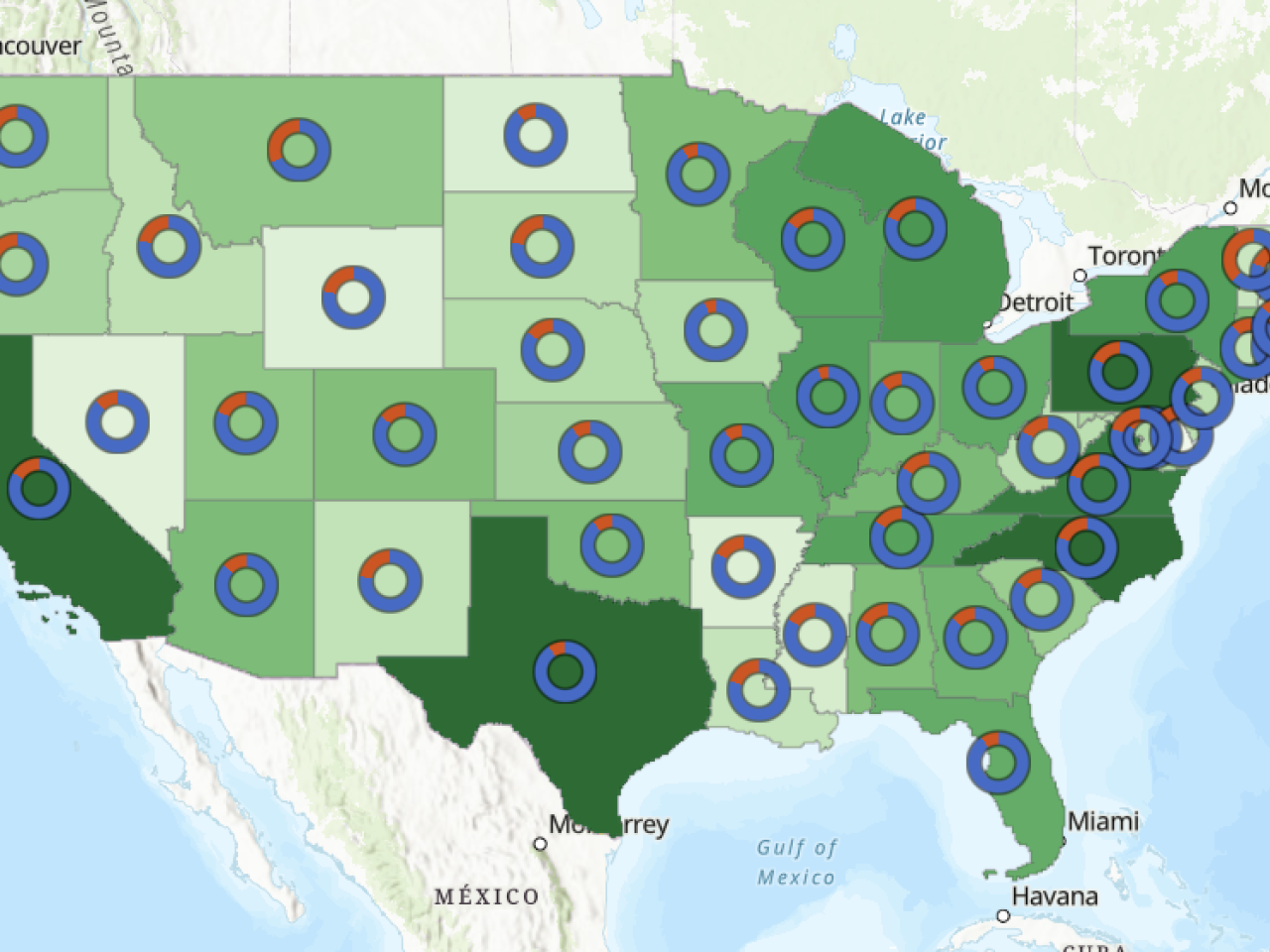
Thousands of schools are located near farms across the U.S. where pesticide may be sprayed, an EWG analysis finds. But some members of Congress want to block state and local safeguards that protect children from pesticide spraying risks.
EWG found that 4,028 elementary schools are located within 200 feet of a crop field where pesticides could be applied. Some pesticides can drift miles from the intended crop target, studies show, creating risks for children at schools beyond the thousands EWG identified.
Many states, cities and counties have adopted legal standards to restrict pesticide spraying near schools, citing the risks they pose to children. Some of these chemicals have been linked to serious health harms, including cancer, neurotoxicity and harm to development and reproduction. Children are especially susceptible to potential health problems.
More than 30 states – including Georgia, Kentucky and Texas – have adopted tough standards for how and when pesticides can be sprayed near schools.
California and Texas lawmakers, for example, require school officials to use low-risk pesticides. Alabama and North Carolina ban crop dusting near schools. Many other states – including Arizona, Louisiana, Maine, Michigan and New Hampshire – have also placed buffer zones for pesticide spraying around schools.
Illinois and other states require that alerts be posted on school grounds to tell students before or after spraying. Some states, including Kentucky, Minnesota and Nevada, require that parents be notified. Some, like Louisiana and Pennsylvania, require schools to track students who are sensitive to pesticides. Other states, including Georgia and New Mexico, limit the times when pesticides can be sprayed near schools.
Laws designed to protect our kids from toxic pesticides don’t stop at the school fence. Many states, including Iowa and Kansas, have adopted laws that restrict pesticides from being sprayed in public parks used by children. Dozens of communities have adopted local ordinances to limit pesticide spraying in these parks.
State and local governments have also adopted pesticide standards to protect workers.
Some states, like California and Oregon, have restricted certain pesticides, citing cancer risks. Other states, including Florida and Washington, have acted to protect workers, including farmworkers and landscapers, who use pesticides and farmers whose crops have been destroyed by drift.
And some workers who have been injured by pesticides have relied on state laws to seek compensation for the harms they have suffered.
But some members of Congress have introduced proposals to block, or preempt, state and local bans on spraying near schools. These proposals are supported by many farm, landscaping and pesticide organizations and companies, including Bayer’s Monsanto. These companies are trying to boost pesticide sales and limit legal judgments that resulted from pesticide use.
Methodology
For this analysis, EWG identified schools within 200 feet of a crop field by creating a 200-foot buffer zone around elementary schools. The locations of U.S. elementary schools come from the National Center for Education Statistics. We overlaid these buffer zones with a footprint of all land used to grow crops, provided by the Department of Agriculture’s Cropland Data Layer.
We counted elementary schools if a crop field designated by the Cropland Data Layer was located within 200 feet of the school. EWG removed all fields from the cropland data that weren’t used to grow crops where pesticides may be sprayed, such as forests, pasture or fallow land.
EWG included in the analysis all land the USDA says is cropland. But because of data accuracy issues, there are likely fields the USDA identifies as crop fields that do not actually contain a crop, especially in cities.
There are cases where we identified an elementary school as being near cropland when it isn’t. But only a small minority of schools would be affected by this.
EWG did not cross-reference the elementary schools near crop fields with state and local pesticide ordinances. The 4,028 schools we found are all elementary schools within 200 feet of a crop field where pesticides could potentially be sprayed, not specifically schools in a location with a city or state pesticide ordinance.




